
sponsored by
 sponsored by |
 | OSdata.com |

LINUX is a free UNIX-like operating system that runs on Intel/Cyrix/AMD Pentium, Intel 80x86, Motorola/IBM PowerPC, Motorola 680x0, Sun SPARC, SGI MIPS, DEC Alpha, HP PA-RISC, DEC VAX, ARM, API 1000+, and CL-PS7110.
Linux is named for Linus Torvalds, a Finnish engineering student who created the original kernel. Linus didn’t want to use Windows and searched for an inexpensive alternative that would run on low cost IBM PC clones. The GNU open source project was progressing very slowly because of political infighting and an attempt to make the same operating system run the same on numerous processors. Linus received permission to use MINIX as the foundation for his own efforts. MINIX was a small version of UNIX created by Andrew S. Tanenbaum to provide college students with a working version of UNIX with no AT&T owned source code. Linus opened a web site on his university student account and started posting free copies of his source code. During the early days of the project, Linus was posting updated versions several times a day, which directly contradicted the commercial approach of only releasing new versions on an infrequent basis after extensive testing. With the help of a growing number of volunteers (literally tens of thousands), Linus quickly replaced all of MINIX with new all new source code. As Linux caught on in popularity (because it allowed college students and hobbyists to experiment with very cheap Intel hardware), other groups of volunteers ported Linux to a wide variety of additional processors. The success of Linux proved the viability of open source software projects and Linus’s approach of rapid and continual incremental updates proved to be an effective method for harnessing volunteer effort and an excellent method for widespread testing on a wide variety of hardware.
OSdata.com is used in more than 300 colleges and universities around the worldFind out how to get similar high web traffic and search engine placement. |
“Linux has achieved a measure of success. In only a few years, the program has evolved from a hacker’s toy into software that is, at least in part, technically superior to Windows NT.” —Stephen Morley, “Revenge of the hackers”, The Economist, July 11th - 17th, 1998w51 [NOTE: Linux has advanced substantially since this article was published, now surpassing Windows 2000 in every way except user interface and installation, both of which are being addressed by the KDE and Gnome projects.]
Intended purpose
server/mainframe: one of the most popular small and medium scale server systems
desktop/workstation: Can be used as a general desktop system, more appropriate as a workstation system for those familiar with UNIX or those who want to tinker with their OS as a hobby — this is changing rapidly and with either KDE or GNOME, Linux can be used by an increasing number of general computing users.
handheld: experimental and hobbyist only
real time: not appropriate
“Linux is a free (GPL Licensed), from scratch operating system based heavily on the POSIX and UNIX APIs. It supports both 32 and 64 bit hardware and provides a stable multiuser internet ready operating system. Linux itself is not UNIX, although many people call it that and you would be very hard pushed to tell the difference. This is because the UNIX trademark has a cost and is specific to systems that meet a complex set of X/Open standards.”w25
“Unix is a trademark that was transferred by Novell Unixware (the result of Novell’s purchase of AT&T Bell Lab’s Unix group) to the non-profit X/Open Company, Ltd, and is now apparently owned by ‘The Open Group’ (the result of a merger between X/Open and OSF). To get their permission to call a product ‘Unix’, The Open Group requires one to pass a number of validation suites that check conformance of APIs, commands and utilities, and the C compiler.” — Steve Byane56 (See also: http://www.opengroup.org/testing/checklist/u98brand.html
“The “holy war” of computing these days — Microsoft’s Windows NT Server vs. UNIX — is, strangely enough, being upstaged by a johnny-come-lately called Linux. And while UNIX-clone Linux’s emerging popularity gives small businesses another attractive alternative when plotting their network operating system (NOS) strategies, it also adds confusion to an already muddled issue.” — Jim Carrm1
“Technically, Windows NT Server 4.0 is no match for any UNIX operating system, not even the non-commercial BSDs [FreeBSD, NetBSD, OpenBSD] or Linux.” —John Kirchw51
Release Date: First version released on September 17, 1991.
Current Version: 2.6.4w88
“For the most cost-conscious customer, Linux, FreeBSD, NetBSD, or OpenBSD would be the obvious choices. They cost nothing, yet they are just as stable and offer as much functionality as, if not more than, the commercial UNIX operating systems.” —“Microsoft Windows NT Server 4.0 versus UNIX”w51
“Linux can be downloaded for free over the Internet or obtained inexpensively with support and documentation from a number of commercial vendors. This makes it an attractive product for companies trying to reduce the cost of licensing and managing OSes.” —R. Scott Raynovich and Polly Sprenger, “Linux legitimacy rallies NT skeptics”, LAN Times, 17 August 1998w51
“Randy Kessell, manager of technical analysis for a Southwestern Bell operation center, notes that because Linux allows his company to do more remote network administration and software loads than was possible with either Microsoft or NetWare products, it has driven down their network management costs.” —Ann Harrison, “In LINUX We…”, Software Magazine, Cover Story, September 1998w51
Hardware Supported: Intel/Cyrix/AMD Pentiumw17, 80486w17, 80386w17, 80286 (partial port)e90, 8086 (partial port)e90, IBM/Motorola PowerPCw17, IBM RS/6000w79, Motorola 68060w17, 68040w17, 68030w17, 68020w17, 68000w17, Sun SPARCw17, Sun SPARC64 (Ultra)e90, SGI MIPSw17, DEC Alphaw17, HP-PA RISCw17, ARMw17, API 1000+w17, CL-PS7110w17
680x0 assembly language is discussed in the assembly language section.
Number of bits: 32 or 64 (depending on the processor used)e90
Kernel: LINUXe61
“The Linux kernel was originally written by Linus Torvalds (hence the name “Linux”), and it maintained by a team of developers. The kernel itself is released under the GPL (GNU Public License).” —Rich Steinere61 (See also: http://www.linuxhq.org
Some versions of LINUX use the MACH kernel. These include: MkLinux (PowerPC), Intel MkLinux, and HP/PA MkLinux.e75
POSIX: compatible
Peripherals: “most PC hardware” —Kristian Elof Sørensenw36
John Kirch: “Ease of configuration and being able to configure a server without causing downtime is yet another aspect of functionality: ‘Some versions of UNIX (Linux, for example) support loadable device modules. This means you can boot Linux and reconfigure its support for hardware and software on the fly. For example, you can boot Linux without support for the SCSI card you have installed. You simply load support for that SCSI card when you need to access one or more of the SCSI-connected devices, such as an optical disk for backup. You can unload the SCSI driver when you’re finished. You can also freely load and unload support for sound cards, network cards — even file systems such as HPFS, FAT, VFAT, and others (an NTFS driver is in the works).“—Nicholas Petreley, The new UNIX alters NT’s orbit: The re-emergence of UNIX threatens to modify the future direction of NT, NC World, April 1998.”w22
Graphics Engine: X Windoww25
Text Command Shell: UNIX shells (default shell is bash)
“The properties of the command-line interface depend to some extend on the shell involved. Linux uses shells which tend to be close of (or derived from) Unix shells. Typical shells are bash, tcsh, and zsh.” —Rich Steinere61
User Interface (graphic): XWindowse61
“Linux uses the X windows system (usually) as a graphical interface, which gives it the capability to distribute displays over a network, and which allows for windowing on the desktop. The X window managers or environments each have their own names (like AfterStep, fvwm, twm, olvwm, Enlightenment, KDE, etc). The X server which is normally used in Linux is XFree86.” —Rich Steinere61 (See also: http://www.xfree86.org
“Linux uses internet and industry standard components and protocols giving a system with complete network integration. The operating system can act as a server for most major file serving protocols, and provide all the major internet applications.”w25
“Yesterday’s college students learned their UNIX expertise on Linux and FreeBSD. Today they’re working in IT departments, and many of them are openly hostile to both Microsoft and Windows NT. As a result, Linux, BSD, Solaris, and other forms of UNIX are finding their way into IT departments, both overtly and on the sly. “For example, are you sure that’s an NT server you’re connecting to at work? IS employees in many corporations have secretly installed UNIX servers that provide native NT services. Why take such a risk? Linux and FreeBSD are free, as is SAMBA, the software that provides NT services. So the IS department saves money. And managers are unlikely to find out UNIX is behind the scenes because fewer people will complain about server downtime. “Fewer people will complain because the servers are more stable than Windows NT. Linux, FreeBSD, and BSDI UNIX outperform Windows NT by a wide margin on limited hardware, and under some circumstances can perform as well or better than NT on the best hardware. Once behind in scalability features, UNIX on Intel is catching up and may soon surpass NT in the number of processors it can use, and how it uses them.” —Nicholas Petreley (editor-in-chief of NC World and columnist for InfoWorld and NT World Japan), “The new UNIX alters NT’s orbit: The re-emergence of UNIX threatens to modify the future direction of NT”, NC World, April 1998w51
“Since these operating systems [Linux, FreeBSD, NetBSD, and OpenBSD] are free for use even in commercial environments, many ISPs run on Linux or FreeBSD. Linux is the most popular and will run on a wide range hardware: Sun, Intel, DEC Alpha, PowerPC, PowerMac, etc. Paul Krill’s recent articles in InfoWorld (Linux picking up steam and Linux supporters rally around freeware OS) focus on the ever increasing support of major vendors and future plans for added functionality, i.e. support for Intel’s 64-bit Merced processor. Currently, Linux is perhaps the fastest growing operating system on the market. For more information, see Linux Resources or Red Hat Software.” —“Microsoft Windows NT Server 4.0 versus UNIX”w51
“Meanwhile, Windows NT already loses on many more competitive issues. Linux, FreeBSD, and other forms of Unix can be configured as a firewall right out of the box. Windows NT cannot. Free Unix operating systems have built-in features like IP masquerading. Windows NT doesn’t even do basic IP filtering without additional software.” —Nicholas Petreley, “The new Unix alters NT’s orbit”, NC Worldw74

Businesses and organizations with servers powered by Linux: 1st-Netcard.com, Deja News, Etoys, free-dvd.org.lu (SuSE/Linux), Google.com, HomeStore.com, LinuxSucks.org, MP3.com, Napster.com (Red Hat), NetBroadcaster.com, NetWare, PayPal.com, PlanetofMusic.com, Rackspace, Real.com, Red Hat (Red Hat Secure Linux), royal.gov.uk (the British Royal Family), Slashdot.org, Yahoo.com (also uses FreeBSD)w52
ftp://ftp.eng.auburn.edu/pub/doug/ “bootp-DH2.x” free, patched CMU BOOTP-DD2.4.x server from Doug Hughes of auburn.edu. Supports DHCP, even for Win95 clients. Adds the patches from the Samba mailing list to support PCNFS and Win95 simultaneously. For SunOS 4.x, Solaris 2.x, Linux, and NetBSD servers.
“The existence of such alliances as mentioned in the article Andreessen Sees Mozilla-Linux Upset of Windows clearly shows that Linux is strengthening its presence in commercial environments. (For newcomers to this arena, Mozilla is the name of the Netscape/Communicator code and Marc Andreessen is Cofounder and Executive VP of Products at Netscape).” —“Microsoft Windows NT Server 4.0 versus UNIX”w51
“…Corel, which has already announced plans to build a Linux-based network computer, said it will next month post free Linux-based development tools to its Web site, joining a number of software companies supporting the Linux open source movement.” —Erich Luening, “Corel joins Linux fest”, CNET News.Com, 8 May 1998w51
“The very latest headlines [1998] indicate that Linux is well on its way into the major leagues: Informix, Oracle ready to port to Linux (PCWeek Online, 20 July 1998), Oracle to port database to Linux (PCWeek Online, 20 July 1998), and Netscape: Linux a top priority (CNET News.Com, 7 April 1998). … Also noteworthy is a new alliance between Sun Microsystems and Linux International (Slashdot: Sun Joins Linux International, 21 May 1998).” —“Microsoft Windows NT Server 4.0 versus UNIX”w51
“Tim Payne, director of database marketing at Oracle, says many of his company’s corporate customers have made large investments in Linux. When Oracle announced in July [1998] that it would be offering 24x7 support for Oracle8 on Linux, he says 300 customers called the next day asking about availability. ‘It’s reliable, it’s proven, it runs on commodity Intel boxes, and it’s a really low-cost alternative to NT,’ says Payne. ‘The fact that you are going to be able to get enterprise quality support from Oracle to deploy on the Linux platform will help customers adopt Linux.’ ” —Ann Harrison, “In LINUX We…”, Software Magazine, Cover Story, September 1998w51
Other:
“On March 7, 2003, The SCO Group filed suit against IBM, claiming it improperly inserted proprietary Unix code in the Linux kernel. The case has diverted the attention of the entire IT industry. As a service to [its] visitors, Linux Online has devoted a section of [its] news area to provide more information on SCO controversy.”w88 See www.linux.org/news/sco/index.html.
“The suit has evolved into a full-blown controversy. SCO’s lawyers are threatening to make the case a test of the validity of the Free Software Foundation's General Public License (GPL), under which the Linux kernel and the GNU programs that make up the Linux operating system are distributed. Were SCO to prevail, it might hinder development of Linux and make the general public’s ability to obtain it difficult. It could also have an adverse effect on other Open Source projects which are developed and distributed in ways that are similar to the Linux model. Since SCO is threatening to charge exorbitant licensing fees for Linux, this would be a serious blow to developing nations particularly. Their fledgling IT industries rely on Linux to a great extent in their efforts to overcome a technological lag which contributes to the cycle of poverty. Though most experts in the Linux, Open Source, and Free Software communities believe SCO’s claims dubious, their evidence flimsy, and their chances for success slim, the case has managed to divert the attention of the entire IT industry. It has many in these communities understandably worried.”w89
“Historically, large corporations have steered clear of free software due to the unfounded assumption that anything free can’t be worthwhile. The recent trend among some corporations is to use these cost-effective operating systems. Hewlett-Packard used Linux instead of its own HP-UX operating system ‘to port the Carnegie Mellon Mach kernel to HP PA-RISC in order to use it for their imagery work’ (full story). Schlumberger chose Linux over SCO for its new point of sale computers (Linux Journal, November 1997, Issue 43, pp. 83-4). It is interesting to note that SunWorld On-Line gives Linux positive press in one of its articles, Linux lines up for the enterprise.” —“Microsoft Windows NT Server 4.0 versus UNIX”w51
“Yesterday’s college students learned their Unix expertise on Linux and FreeBSD. Today they’re working in IT departments, and many of them are openly hostile to both Microsoft and Windows NT. As a result, Linux, BSD, Solaris, and other forms of Unix are finding their way into IT departments, both overtly and on the sly.” —Nicholas Petreley, “The new Unix alters NT’s orbit”, NC Worldw74
(for your convenience, look for this symbol ![]() marking passages about LINUX)
marking passages about LINUX)
Please send recommendations on additional URLs to Milo.

“Linux is normally obtained as a "distribution". This is a combination of the Linux operating system kernel and other tools, utilities, and applications. Some of these are available for free over the internet, and others on CD-ROM. Because Linux itself is free software that can be freely copied, many distributions are available both over the internet and sold on CD-ROM with added convenience and support.”w25
“Many of the distributions are based on a small number of other distributions. Slackware, Red Hat, and Debian distributions are all freely usable and extensible. As a result many vendors use these as a basis for value added items or put their own slant on the same work.”w25
Caldera OpenLinux http://www.caldera.com/; CD-ROM; Intel only; LINUX kernal 2.0w25
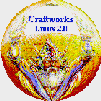
Craftworks Linux http://www.craftwork.com/; CD-ROM; Intel and Alpha; LINUX kernal 2.0w25

Debian Linux http://www.debian.org; free web downloadw25e15; Intelw46, Alphaw46, ARM (still in progress)w46, m68kw46, MIPS (still in progress)w46, PA-RISC (still in progress)w46, PPCw46, SPARCw46, UltraSparcw46e108; LINUX kernal 2.0w25e15
“Debian Linux is almost unique now in that it has no specific commercial backer. Instead Debian is maintained by a team of volunteers in the same manner as the kernel and anyone can take the images and make Debian CDs freely.”w25
Delix DLD http://www.delix.de; German edition; CD-ROM; Intel only; LINUX kernal 2.0w25
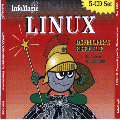
Infomagic Workgroup Server http://www.infomagic.com/; based on Red hat; CD-ROM; Intel only; LINUX kernal 1.2.13w25

LST http://www.lst.de; German edition; CD-ROM; Intel only; LINUX kernal 2.0w25

Pacific HiTech http://www.pht.com/; Red hat and Slackware editions; CD-ROM; Intel only; LINUX kernal 2.0w25e15
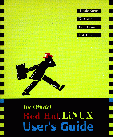
Red Hat Software http://www.redhat.com/; CD-ROM and free web download; Intel, SPARC, and Alpha; LINUX kernal 2.0w25

S.u.S.E http://www.suse.com; English and German; CD-ROM; Intel only; LINUX kernal 1.2.13 and 2.0 w25
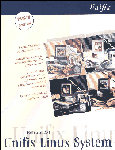
Unifix Linux 2.0 http://www.unifix.de/; POSIX-certified; CD-ROM; Intel only; LINUX kernal 2.0w25
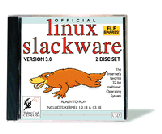
Walnut Creek (“official Slackware” Linux) http://www.cdrom.com/titles/os/slack96.htm; CD-ROM and free web download; Intel only; LINUX kernal 1.2.13 and 2.0 w25
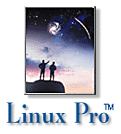
Workgroup Solutions Linux Pro http://www.wgs.com; CD-ROM; Intel only; LINUX kernal 1.2.13w25

Yggdrasil Computing http://www.yggdrasil.com; CD-ROM; Intel only; LINUX kernal 1.2.13w25
http://www.linux.org/users/e15

http://linuxorg.bridgend.cymru.net/ “LINUX.ORG.UK”
http://www.linuxrx.com/ “The Linux Resource Exchange” kernel, patches, how to, lsm, ldp, workstation, security, news, mailing-lists, libraries, utilitiese83
http://www.webwatcher.org/ “Linux Web Watcher” links to a large collection of LINUX related web sites
http://linuxorg.bridgend.cymru.net/WhatIs.html “An Introduction To Linux” (with screen shots and many references)
http://members.aa.net/~swear/pedia/index.html “Gary’s Encyclopedia”
http://sunsite.unc.edu/LDP/LDP/sag/index.html “Linux System Administrators’ Guide 0.6”
http://www.sunsite.auc.dk/ldp/e14
http://www.linuxrx.com/Lists/Lists.perl “The Linux Resource Exchange — Linux related Mailing-lists ”e83
http://www.unixguide.net/unixguide.shtml “UNIXguide.net (AIX, FreeBSD, HP-UX, LINUX, SOLARIS & Tru64)”; a guide for comparable commands and directories in several popular forms of UNIX.
http://home.earthlink.net/~bhami/rosetta.html “Rosetta Stone for Unix”; a guide for comparable commands and directories in several popular forms of UNIX (AIX, Darwin, DG-UX, FreeBSD, HP-UX, IRIX, Linux, NetBSD, OpenBSD, SCO OpenServer, Solaris, SunOS, Tru64, and ULTRIX).
ftp://ftp.eng.auburn.edu/pub/doug/ “bootp-DH2.x” free, patched CMU BOOTP-DD2.4.x server from Doug Hughes of auburn.edu. Supports DHCP, even for Win95 clients. Adds the patches from the Samba mailing list to support PCNFS and Win95 simultaneously. For SunOS 4.x, Solaris 2.x, Linux, and NetBSD servers.
http://www.linuxrx.com/WS_Linux/OS_comparison.html “The Linux resource exchange — Operating systems comparison” LINUX, HPUX, Windows NT, BSDi, FreeBSD, IRIX, Digital UNIX, Solaris, Macintosh, OS/2, UnixWare, OpenServere83
http://www.unix-vs-nt.org/ John Kirch’s article “Microsoft Windows NT Server 4.0 versus UNIX”
http://linuxorg.bridgend.cymru.net/LxCommercial.html “Commercial Vendor Index” (very long list of application software available for LINUX)
http://www.double-barrel.be/linux_apps/textonly.html
http://www.xnet.com/~blatura/linapps.shtml
http://www.cdrom.com/titles/os/os.htm Walnut Creek CDROM offerings of FreeBSD and Linux
http://www.infomagic.com/ Linux plus Linux-related management and applications
For more UNIX book listings, see also the general book listings on the UNIX web page.
If you want your book reviewed, please send a copy to: Milo, POB 1361, Tustin, CA 92781, USA.
Price listings are for courtesy purposes only and may be changed by the referenced businesses at any time without notice.
Running Linux; 2nd edition; by Matt Welsh, Lar Kaufman; O’Reilly & Associates; August 1996; ISBN 1565921518; paperback; 650 pages; $23.96
A Practical Guide to Linux; by Mark G. Sobell; Addison-Wesley Pub Co; June 1997; ISBN 0201895498; paperback; $39.95
Linux Encyclopedia; 5th edition; edited by John Purcell andAmanda Robinson; Independent Pub Group (Computer); March 1997; ISBN 0964430924; paperback (with CD-ROM); 1595 pages; $49.00; This book also includes Matt Welsh’s famous “Linux Installation & Getting Started Guide”, “The Linux User’s Guide”, “The System Administrator’s Guide”, “The Networking Administrator’s Guide”, “The Kernel Hacker’s Guide”, and more!
Linux: The Complete Reference; 2nd edition; by Richard Petersen; Osborne McGraw-Hill; January 1998; ISBN 0078824613; paperback (with CD-ROM — OpenLinux Lite by Caldera); 1008 pages; $39.99
Linux: Installation, Configuration, and Use; by Michael Kofler; Addison-Wesley Pub Co; February 1998; ISBN 0201178095; paperback (with CD-ROM — RedHat 4.1); 677 pages; $34.95
Discover Linux (1st Ed); by Steve Oualline; IDG Books Worldwide; November 1997; ISBN 0764531050; paperback (with CD-ROM — RedHat 4.2); 375 pages; $19.99
1 Microsoft Way: A Cookbook To Breaking Bill Gates Windows Monopoly Without Breaking Windows (with Linux CD Operating System); by Reginald P Burgess; American Group Publishing; April 27, 1998; ISBN 1891950088; paperback; 208 pages; $17.95
Linux Multimedia Guide; by Jeff Tranter; O’Reilly & Associates; October 1996; ISBN 1565922190; paperback; 363 pages; $26.36
A Practical Guide to the Unix System; by Mark G. Sobell; Addison-Wesley Pub Co; October 1994; ISBN 0805375651; paperback; 800 pages; $37.95
Running a Perfect Internet Site With Linux; by Dee-Ann Leblanc; Que Education & Training; February 1996; ISBN 0789705141; paperback (with disk); includes Linux, NCSA’ Internet and Web Server software, plus FTP and Usenet server software; $49.99
Building a Linux Internet Server; by George Eckel, Chris Hare; New Riders Publishing; September 1995; ISBN 1562055259; paperback (with CD-ROM); $32.00
Linux Encyclopedia; 5th edition; edited by John Purcell andAmanda Robinson; Independent Pub Group (Computer); March 1997; ISBN 0964430924; paperback (with CD-ROM); 1595 pages; $49.00; This book also includes Matt Welsh’s famous “Linux Installation & Getting Started Guide”, “The Linux User’s Guide”, “The System Administrator’s Guide”, “The Networking Administrator’s Guide”, “The Kernel Hacker’s Guide”, and more!
Essential System Administration: Help for Unix System Administrators (Nutshell Handbook); 2nd edition; by Aeleen Frisch; O’Reilly & Associates; December 1996; ISBN 1565921275; paperback; 788 pages; $27.96
Universal Command Guide; by Guy Lotgering (UCG Team); Hungry Minds, Inc; April 2002; ISBN 0764548336; hardcover with CD-ROM; 1,600 pages; $69.99; cross references all of the commands from: AIX; Solaris; RedHat Linux; Berkeley BSD; NetWare 3.2, 4.11, 5, and 6; DOS 6.22; Windows 95, 98, ME, XP, NT 4 Workstation, NT 4 Server, NT 4 Terminal Server, 2000 Professional, 2000 Server, 2000 Advanced Server; Citrix Mainframe 1.8; and Mac 9
The Complete Guide to Netware 4.11/Intranetware; 2nd edition; by James E. Gaskin; Sybex; December 1996; ISBN 078211931X; paperback; $47.99; includes information on getting NetWare working with Windows, Macintosh, UNIX, and OS/2
Running a Perfect Internet Site With Linux; by Dee-Ann Leblanc; Que Education & Training; February 1996; ISBN 0789705141; paperback (with disk); includes Linux, NCSA’ Internet and Web Server software, plus FTP and Usenet server software; $49.99
Building a Linux Internet Server; by George Eckel, Chris Hare; New Riders Publishing; September 1995; ISBN 1562055259; paperback (with CD-ROM); $32.00
Building a Unix Internet Server; by George Eckel; New Riders Publishing; June 1995; ISBN 1562054945; paperback (with CD-ROM); 325 pages; $30.40
Beginning Linux Programming; by Neil Matthew, Richard Stones, S. Stones Matthew; Wrox Press Inc; September 1996; ISBN 1874416680; paperback; 710 pages; $29.56
Linux Encyclopedia; 5th edition; edited by John Purcell andAmanda Robinson; Independent Pub Group (Computer); March 1997; ISBN 0964430924; paperback (with CD-ROM); 1595 pages; $49.00; This book also includes Matt Welsh’s famous “Linux Installation & Getting Started Guide”, “The Linux User’s Guide”, “The System Administrator’s Guide”, “The Networking Administrator’s Guide”, “The Kernel Hacker’s Guide”, and more!
Linux Multimedia Guide; by Jeff Tranter; O’Reilly & Associates; October 1996; ISBN 1565922190; paperback; 363 pages; $26.36
Advanced Programming in the Unix Environment (Addison-Wesley Professional Computing Series); by W. Richard Stevens; Addison-Wesley Pub Co; June 1992; ISBN 0201563177; hardcover; 744 pages; $63.95
Linux Multimedia Guide; by Jeff Tranter; O’Reilly & Associates; October 1996; ISBN 1565922190; paperback; 363 pages; $26.36
![]()
If you want your book reviewed, please send a copy to: Milo, POB 1361, Tustin, CA 92781, USA.
See also the listing of LINUX distributions.
Price listings are for courtesy purposes only and may be changed by the referenced businesses at any time without notice.
We are working on providing a second source.

Virtual PC 3.0 with Red Hat Linux; Connectix; a software alternative that allows running Linux software on a PowerPC Macintosh; Linux preconfigured on a software emulation of a Pentium machine, so there is no reformatting of hard drives or installation of Linux; both the Macintosh and Linux running simultaneously on the same computer; $84.95 ($34.95 after mail-in rebate)
Complete Red Hat Linux Operating System (Boxed); MACMILLAN DIGITAL; August 1997; ISBN 0672310570; CD-ROM; $64.99; out of print (can still be ordered through Amazon)

OSdata.com is used in more than 300 colleges and universities around the world |
| Tweets by @osdata |
A web site on dozens of operating systems simply can’t be maintained by one person. This is a cooperative effort. If you spot an error in fact, grammar, syntax, or spelling, or a broken link, or have additional information, commentary, or constructive criticism, please e-mail Milo. If you have any extra copies of docs, manuals, or other materials that can assist in accuracy and completeness, please send them to Milo, PO Box 1361, Tustin, CA, USA, 92781.
If you have an extra or unwanted copy of any official manuals or documentation on this operating system, please send them to: Milo, POB 1361, Tustin, CA 92781, USA. I have the following items: NONE.
Note: I am looking for a fan of LINUX who has the time to check this web site for completeness and accuracy regarding LINUX. Just check through the site about once a week or so and report back with any information (including the URL of the web page you are reporting).
Click here for our privacy policy.
Click here to skip over the summaries of individual operating systems.
| previous page | next page |
Digital UNIX (or DUNIX) |
||
|
||
|
||

This web site handcrafted on Macintosh ![]() computers using Tom Bender’s Tex-Edit Plus
computers using Tom Bender’s Tex-Edit Plus ![]() and served using FreeBSD
and served using FreeBSD ![]() .
.
†UNIX used as a generic term unless specifically used as a trademark (such as in the phrase “UNIX certified”). UNIX is a registered trademark in the United States and other countries, licensed exclusively through X/Open Company Ltd.
Names and logos of various OSs are trademarks of their respective owners.
Copyright © 1998, 1999, 2000, 2001, 2002, 2004 Milo
Last Updated: March 31, 2004
Created: June 22, 1998
Click here to skip over the summaries of individual operating systems.
| previous page | next page |